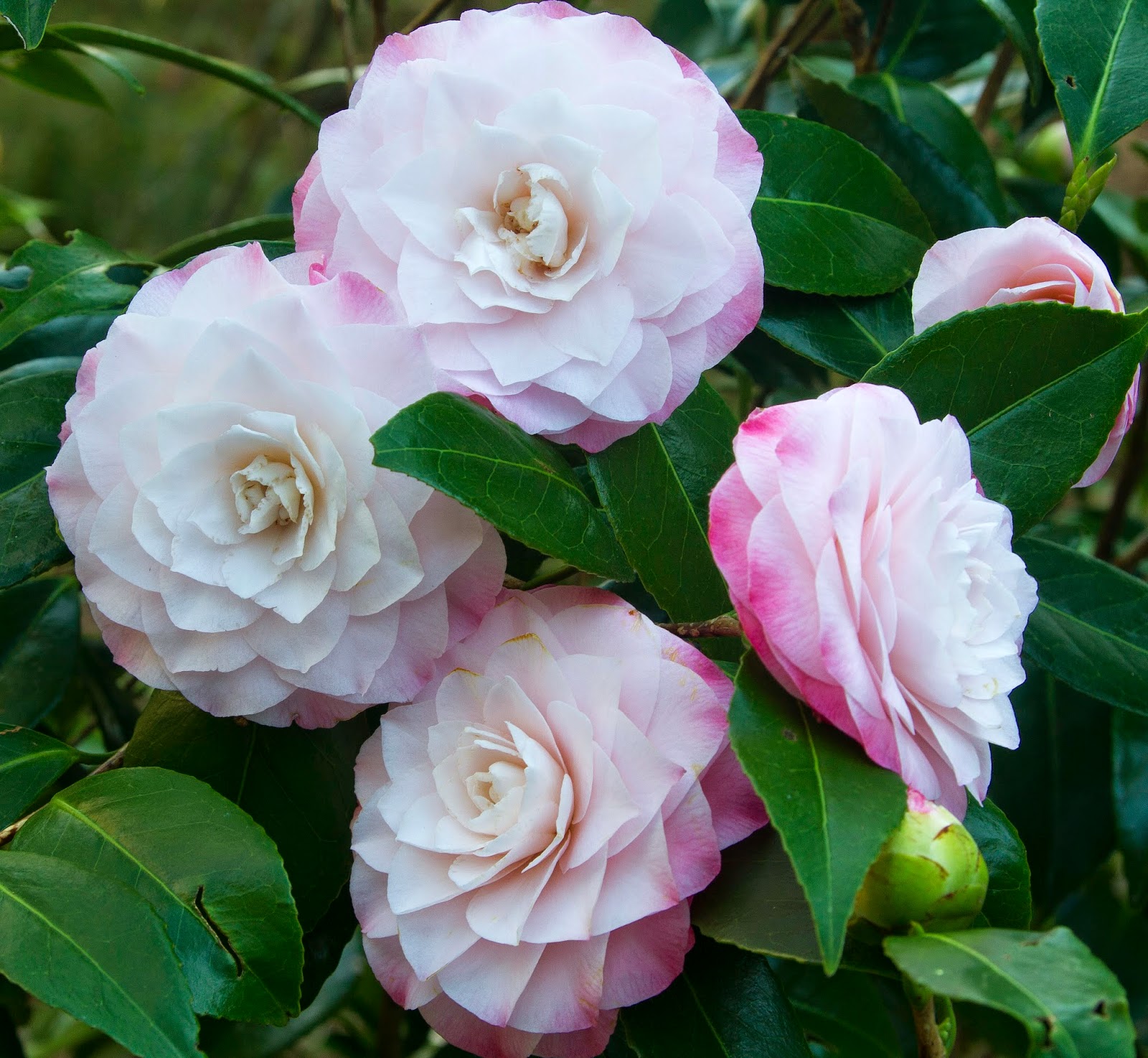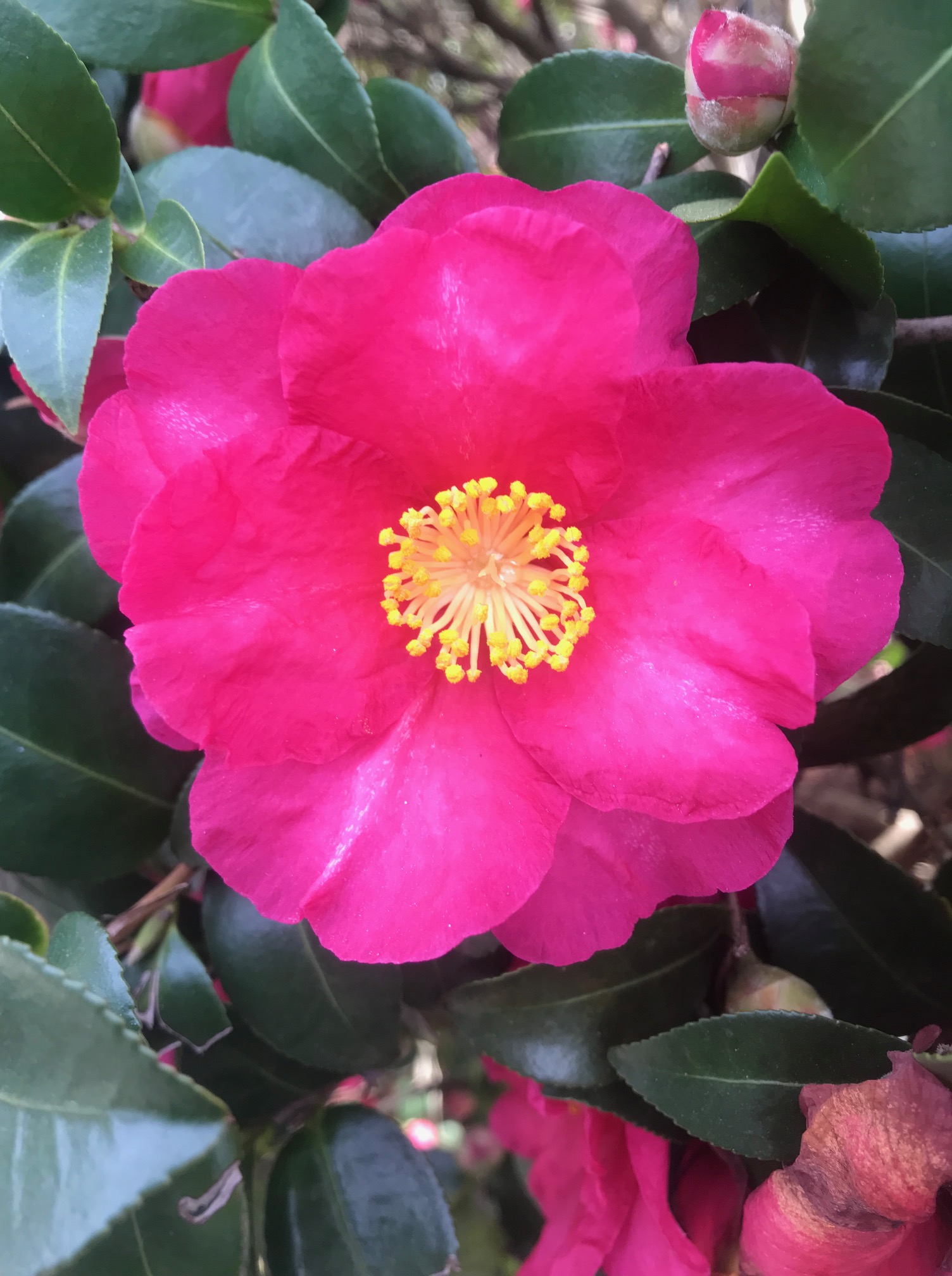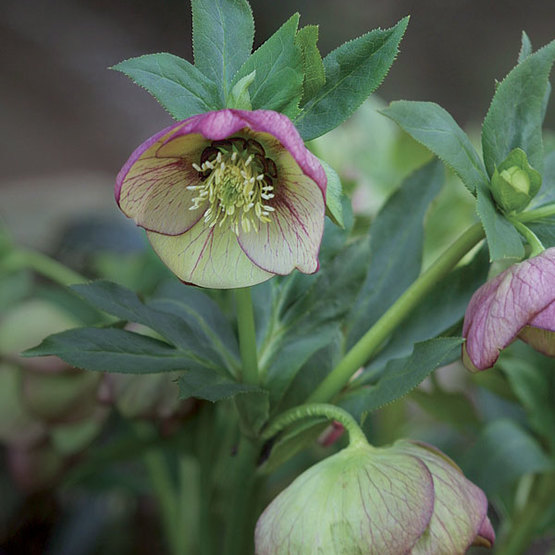What a beautiful St. Patrick’s Day weekend, reaching the upper 70’s on Friday, and even though the temps dropped back down, we had clear sunny weather Friday through Sunday! We’re doubling up today to get back on schedule, covering two gorgeous late winter/early spring bloomers: camellia (a shrub) and hellebore (a perennial).
Camellia
The camellia that everyone is noticing this time of year is Camellia japonica. It’s a beautiful evergreen shrub with dark, glossy green leaves and large rose-like flowers that range from single (only one row of petals), to full double varieties with rows and rows of petals, similar to a peony. Camellia sasanqua looks similar, but has smaller leaves and flowers, and the flowers only come in single or semi-double forms. It blooms in the fall.
 Camellia japonica ‘Nuccio’s Pearl’
Camellia japonica ‘Nuccio’s Pearl’
Camellias prefer well-drained, rich soils and can be slow to establish due to their slow growth. They should be protected from harsh sunlight and heavy winds in order to perform at their best.
 Camellia sasanqua, photo by Herbie Champion
Camellia sasanqua, photo by Herbie Champion
Maintenance and ID Tips
- Camellias should never be sheared.
- Occasional pocket pruning can be done to gently shape the shrub and increase air flow within the canopy.
- Camellias are recognizable by their thick, leathery, glossy, leaves with finely toothed edges. There are no thorns or spines.
- The flowers are very recognizable, even though there are a varieties of types and colors available. The flowers are very large, and bloom much earlier in the year than most flowering shrubs do.
Hellebore, AKA Lenten Rose
Hellebores (Helleborus spp.) are excellent perennials for dry shade gardens. They bloom during a time when most perennials are dormant, so they really make a statement in the late winter/early spring garden! Shade resistant, drought-resistant, deer- and rabbit-resistant…these are tough plants. Some varieties self-seed, so gardeners can transplant new ones that sprout up each year. It usually takes 3 years for a plant to flower if grown from seed, but if plants are purchased from nurseries, they are generally old enough to flower the first year after planting.

Maintenance and ID Tips
- Cut back ratty or wind-burned foliage in late spring as needed. The flowers last a long time, but may but cut back when they are no longer attractive. Leave the flower stems until the seeds develop and fall if new plants are desired.
- A general slow-release fertilizer may be applied in late winter when the new growth starts to appear, if desired.
- The evergreen leaves are thick, leathery, dark green, and sometimes shiny. They have serrated edges which may cause scratches or cuts on skin because the leaves are so stiff.
- The flowers last a long time because the outer petals are not actually petals, but “tepals”, which are sepals that look like petals (sepals are the protective coverings of the outside of a flower bud before it opens–think of the little green leaflike parts on the base of a rosebud). Because they are meant to protect the bud, they are much tougher than petals and can survive cold temperatures.
- The flowers often nod like bells on the flower stalks.
- The common name, lenten rose, refers to the fact that they are often in bloom during Lent.
 Helleborus (Rodney Davey Marbled Group) ‘Penny’s Pink’ under Cornus stems in John Massey’s garden at Ashwood Nurseries © Copyright Jonathan Buckley
Helleborus (Rodney Davey Marbled Group) ‘Penny’s Pink’ under Cornus stems in John Massey’s garden at Ashwood Nurseries © Copyright Jonathan Buckley